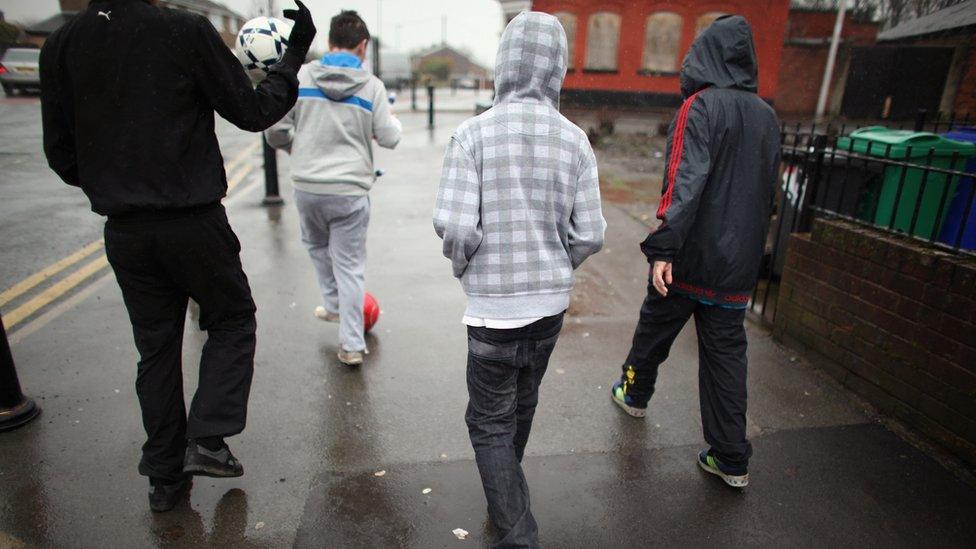Serious violence rose after lockdown restrictions ended
- Published
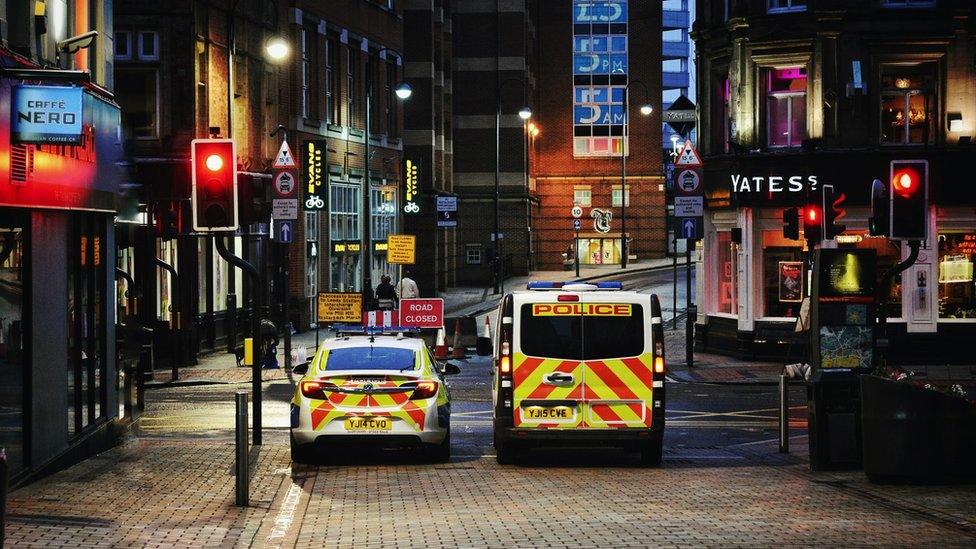
Serious violence increased by nearly a quarter after Covid-19 lockdown restrictions were eased in England and Wales last year, a study suggests.
The 23% rise is the biggest since records began, say researchers.
Serious violence almost reached pre-pandemic levels last August, however, the Cardiff University report suggests 2021 levels were below previous years.
"Precise targeting of police resources at violence hot spots" is needed, the authors argue.
The university's Violence Research Group analysed data from 74 emergency units in England and Wales in 2021 and found an estimated 146,856 people attended A&E for treatment of violence-related injuries - a rise of 27,745 people on 2020.
"The easing of restrictions in 2021 was associated with a significant increase in serious violence," says co-author Prof Jonathan Shepherd.
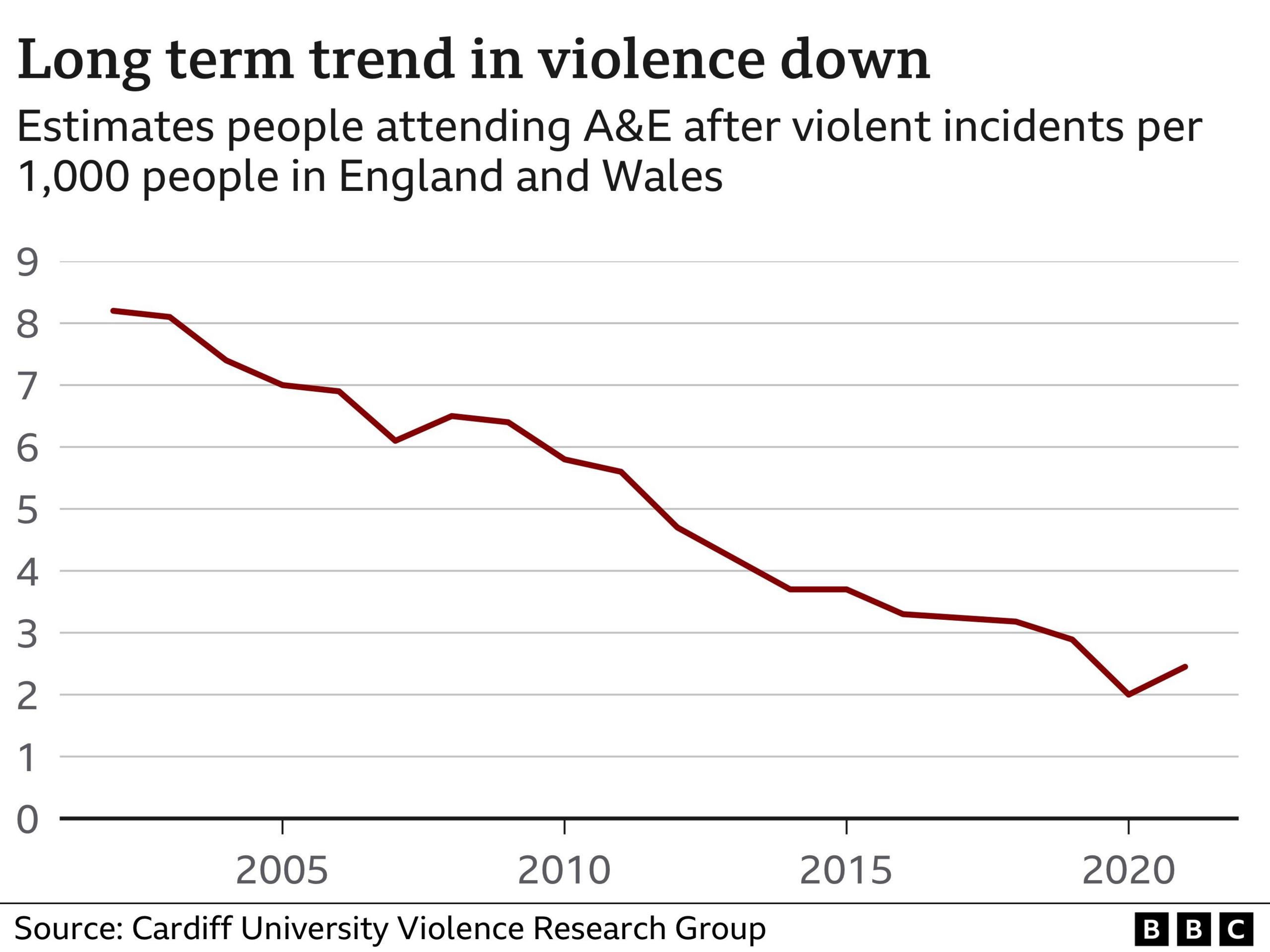
This rise in serious violence, defined as violence resulting in emergency hospital treatment, affected all age groups.
The age groups with the largest increases were:
children aged 0-10 years (up 41.9%)
and adults aged 18-30 years (up 29.2%)
Last year's increase followed a massive drop in violence in 2020, which was the sharpest for at least 20 years and was driven by social gathering bans and the closure of pubs and nightclubs.
"Violence levels ebbed and flowed throughout 2020 as restrictions were eased and tightened," says the report.
Two Covid-19-related national lockdowns were imposed in England and Wales in March and November 2021 and a third began in England in January 2021.
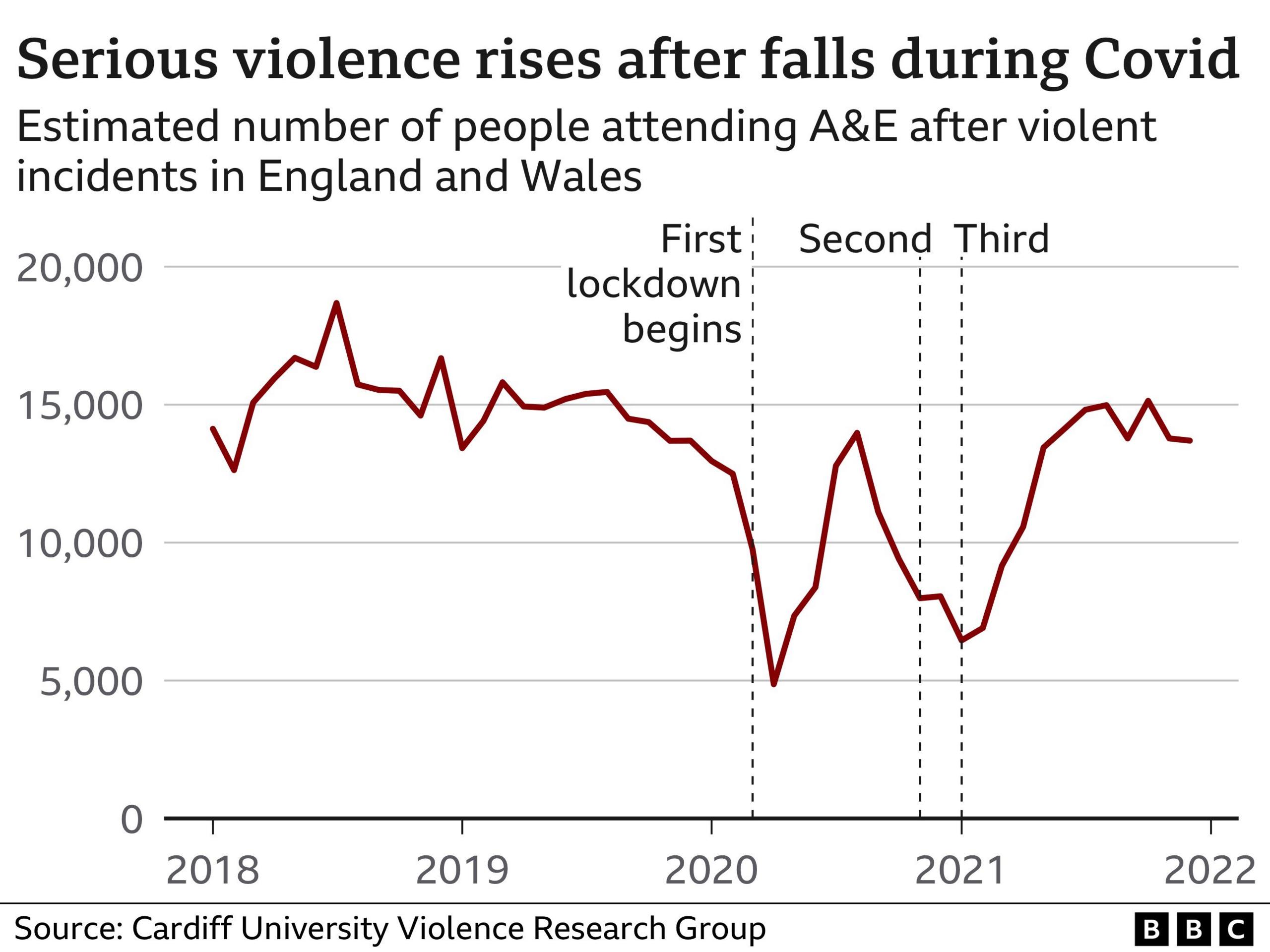
Serious violence began to increase in February 2021. "This increase may reflect lockdown fatigue or perception of the lower Covid-19 risks associated with vaccination," says the report.
Although violence saw a sharp rise in 2021, the year as a whole saw levels of violence down 24% compared with 2017 and 49% compared 2011, for example.
Researchers found that violence-related hospital attendances were most frequent on Saturdays and Sundays.
Pandemic restrictions meant the Office for National Statistics Crime Survey could not conduct face-to-face interviews for two years.
The Cardiff University team says its "public health perspective of violence represents the only overall measure of violence causing serious, non-fatal harm" during this period.
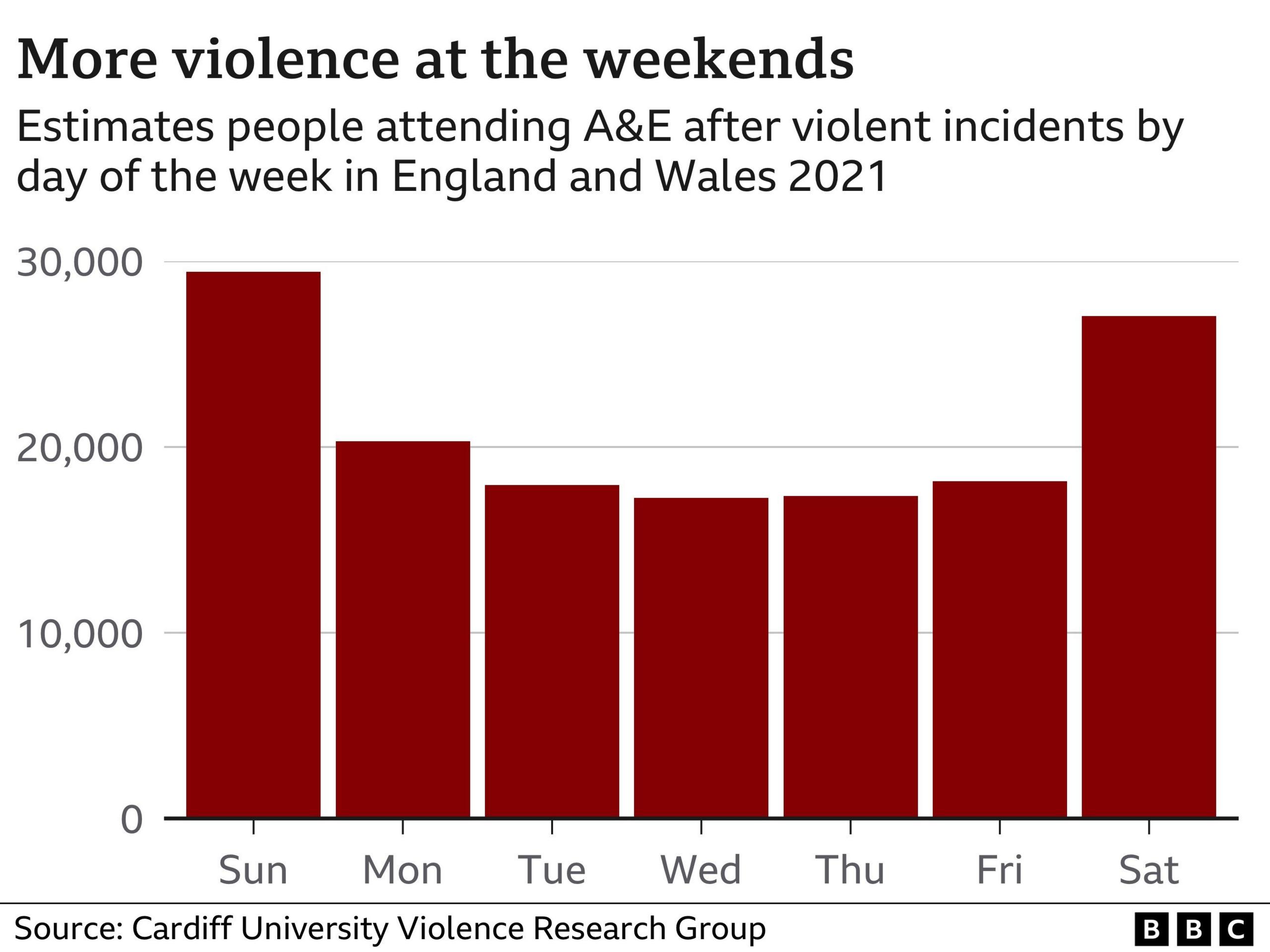
However, Covid-19-related service pressures in the NHS - including post-pandemic backlogs of patients waiting for treatment - limited the number of hospitals able to share data.
Despite concerns that successive lockdown restrictions may have increased the risk of serious violence for women and girls, the researchers found no evidence of this.
The report's authors also studied violence in Scotland for the first time, with an estimated 8,549 people attending emergency units for violence-related injury in 2021.
Hot spots
The authors say their findings highlight the need for police resources to be targeted at hot spots identified from A&E data.
By using a continuous stream of detailed hospital information, police and local authorities can work out where to deploy resources, they argue.
"Without this detailed information, police are blind to when and where half of this serious violence takes place," says the report.
"If tried and tested prevention practice is implemented, the burdens on stretched emergency services will be reduced as well as the disfiguring, disabling effects of violence and its impact on mental health.
"Serious violence is preventable, not inevitable."
Related topics
- Published12 May 2021

- Published13 July 2020
